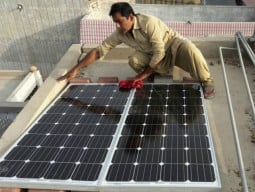
The MDGs ambitiously aimed to drastically reduce poverty and hunger; achieve universal education; promote gender equality; reduce child and maternal deaths; combat HIV, malaria and other diseases; ensure environmental sustainability; and create global partnerships for development. While varying degrees of progress was made in achieving MDG targets in different countries, there is still much that remains to be done. With the MDG deadline expiring at the end of December, about one billion people are still living on less than $1.25 a day, and more than 800 million people do not have enough food to eat. Women are still fighting hard for their rights, and millions of them continue to die giving birth. The MDGs did, however, provide a framework around which governments and international development agencies could formulate development policies and allocate resources.
While the MDGs sought to address several vital development challenges, these goals were not comprehensive in their approach, nor detailed enough in the specified targets to address the root causes of poverty, or to give adequate attention to the issue of human rights, for example. The MDGs essentially also provided targets for poor countries to achieve, with financial support from wealthy states. Conversely, under the SDGs, every country will be expected to work towards achieving goals like reducing inequality within and among countries. Within the 17 SDGs goals are 169 specific targets.
Some powerful countries have expressed reservations that the SDG agenda consisting of 17 goals is too unwieldy to implement. Yet, it is important to note that unlike the MDGs which were formulated by a group of technocrats in the UN headquarters, the SDGs were formulated subsequent to the largest consultation process in the UN’s history. Conceptually the SDGs are no doubt an impressive achievement. However, ideas and aspirations do not mean much unless backed by required financial allocations and mechanisms to ensure effective implementation. It is on both these counts that the success of the SDGs ultimately rests.
The UN has put forth measures to generate investment for tackling the challenges of sustainable development. These measures stress the need for a recommitment to the longstanding unfulfilled demand for rich countries to dedicate 0.7 per cent of their Gross National Income for overseas development assistance. In addition, the UN hopes that private sector involvement, tax reform measures and a crackdown on illicit financial flows and corruption will also provide additional financial backing for the SDGs. Civil society organisations are, however, disappointed, as they had been calling for a more drastic reform of the international finance system, which they consider to be working to the disadvantage of developing countries. Their insistence on the need for a new international tax body to generate sufficient funds for development purposes also did not secure the UN’s endorsement. Civil society remains suspicious of the importance given to the profit-motivated private sector, including multinational corporations and to arrangements such as public-private-partnerships, to address socio-economic disparities and environmental degradation.
Besides the major challenge of securing sufficient funds for the SDGs, it will be important to place greater emphasis on translating the SDG agenda into workable action plans at the national level, which had proved to be a major stumbling block for the MDGs. Since the UN does not have a mechanism to ensure compliance with SDG pledges made by national governments, one wonders whether civil society across countries will be able to build sufficient pressure to hold their governments accountable to their SDG commitments. Otherwise, the world may still be plagued by disturbing inequalities and deprivations, even in 2030.
Published in The Express Tribune, October 30th, 2015.
Like Opinion & Editorial on Facebook, follow @ETOpEd on Twitter to receive all updates on all our daily pieces.








































COMMENTS (1)
Comments are moderated and generally will be posted if they are on-topic and not abusive.
For more information, please see our Comments FAQ